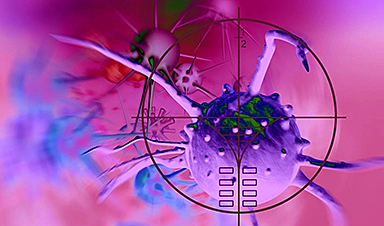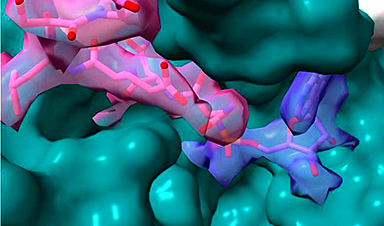Artificial intelligence (AI) comes with promises of helping coders code faster, drivers drive safer, and making daily tasks less time-consuming. But in a commentary published October 10 in the journal Joule, the founder of Digiconomist demonstrates that the tool, when adopted widely, could have a large energy footprint, which in the future may exceed the power demands of some countries.
Since 2022, generative AI, which can produce text, images, or other data, has undergone rapid growth, including OpenAI’s ChatGPT. Training these AI tools requires feeding the models a large amount of data, a process that is energy intensive. Hugging Face, an AI-developing company based in New York, reported that its multilingual text-generating AI tool consumed about 433 megawatt-hours (MWH) during training, enough to power 40 average American homes for a year.
AI’s energy footprint does not end with training. De Vries’s analysis shows that when the tool is put to work—generating data based on prompts—every time the tool generates a text or image, it also uses a significant amount of computing power and thus energy. For example, ChatGPT could cost 564 MWh of electricity a day to run.
While companies around the world are working on improving the efficiencies of AI hardware and software to make the tool less energy intensive, de Vries says that an increase in machines’ efficiency often increases demand. In the end, technological advancements will lead to a net increase in resource use, a phenomenon known as Jevons’ Paradox.
“The result of making these tools more efficient and accessible can be that we just allow more applications of it and more people to use it,” de Vries says.
Google, for example, has been incorporating generative AI in the company’s email service and is testing out powering its search engine with AI. The company processes up to 9 billion searches a day currently. Based on the data, de Vries estimates that if every Google search uses AI, it would need about 29.2 TWh of power a year, which is equivalent to the annual electricity consumption of Ireland.
This extreme scenario is unlikely to happen in the short term because of the high costs associated with additional AI servers and bottlenecks in the AI server supply chain, de Vries says. But the production of AI servers is projected to grow rapidly in the near future. By 2027, worldwide AI-related electricity consumption could increase by 85 to 134 TWh annually based on the projection of AI server production.
The amount is comparable to the annual electricity consumption of countries such as the Netherlands, Argentina, and Sweden. Moreover, improvements in AI efficiency could also enable developers to repurpose some computer processing chips for AI use, which could further increase AI-related electricity consumption.
“The potential growth highlights that we need to be very mindful about what we use AI for. It’s energy intensive, so we don’t want to put it in all kinds of things where we don’t actually need it,” de Vries says.
News
Most Plastic in the Ocean Is Invisible—And Deadly
Nanoplastics—particles smaller than a human hair—can pass through cell walls and enter the food web. New research suggest 27 million metric tons of nanoplastics are spread across just the top layer of the North [...]
Repurposed drugs could calm the immune system’s response to nanomedicine
An international study led by researchers at the University of Colorado Anschutz Medical Campus has identified a promising strategy to enhance the safety of nanomedicines, advanced therapies often used in cancer and vaccine treatments, [...]
Nano-Enhanced Hydrogel Strategies for Cartilage Repair
A recent article in Engineering describes the development of a protein-based nanocomposite hydrogel designed to deliver two therapeutic agents—dexamethasone (Dex) and kartogenin (KGN)—to support cartilage repair. The hydrogel is engineered to modulate immune responses and promote [...]
New Cancer Drug Blocks Tumors Without Debilitating Side Effects
A new drug targets RAS-PI3Kα pathways without harmful side effects. It was developed using high-performance computing and AI. A new cancer drug candidate, developed through a collaboration between Lawrence Livermore National Laboratory (LLNL), BridgeBio Oncology [...]
Scientists Are Pretty Close to Replicating the First Thing That Ever Lived
For 400 million years, a leading hypothesis claims, Earth was an “RNA World,” meaning that life must’ve first replicated from RNA before the arrival of proteins and DNA. Unfortunately, scientists have failed to find [...]
Why ‘Peniaphobia’ Is Exploding Among Young People (And Why We Should Be Concerned)
An insidious illness is taking hold among a growing proportion of young people. Little known to the general public, peniaphobia—the fear of becoming poor—is gaining ground among teens and young adults. Discover the causes [...]
Team finds flawed data in recent study relevant to coronavirus antiviral development
The COVID pandemic illustrated how urgently we need antiviral medications capable of treating coronavirus infections. To aid this effort, researchers quickly homed in on part of SARS-CoV-2's molecular structure known as the NiRAN domain—an [...]
Drug-Coated Neural Implants Reduce Immune Rejection
Summary: A new study shows that coating neural prosthetic implants with the anti-inflammatory drug dexamethasone helps reduce the body’s immune response and scar tissue formation. This strategy enhances the long-term performance and stability of electrodes [...]
Scientists discover cancer-fighting bacteria that ‘soak up’ forever chemicals in the body
A family of healthy bacteria may help 'soak up' toxic forever chemicals in the body, warding off their cancerous effects. Forever chemicals, also known as PFAS (per- and polyfluoroalkyl substances), are toxic chemicals that [...]
Johns Hopkins Researchers Uncover a New Way To Kill Cancer Cells
A new study reveals that blocking ribosomal RNA production rewires cancer cell behavior and could help treat genetically unstable tumors. Researchers at the Johns Hopkins Kimmel Cancer Center and the Department of Radiation Oncology and Molecular [...]
AI matches doctors in mapping lung tumors for radiation therapy
In radiation therapy, precision can save lives. Oncologists must carefully map the size and location of a tumor before delivering high-dose radiation to destroy cancer cells while sparing healthy tissue. But this process, called [...]
Scientists Finally “See” Key Protein That Controls Inflammation
Researchers used advanced microscopy to uncover important protein structures. For the first time, two important protein structures in the human body are being visualized, thanks in part to cutting-edge technology at the University of [...]
AI tool detects 9 types of dementia from a single brain scan
Mayo Clinic researchers have developed a new artificial intelligence (AI) tool that helps clinicians identify brain activity patterns linked to nine types of dementia, including Alzheimer's disease, using a single, widely available scan—a transformative [...]
Is plastic packaging putting more than just food on your plate?
New research reveals that common food packaging and utensils can shed microscopic plastics into our food, prompting urgent calls for stricter testing and updated regulations to protect public health. Beyond microplastics: The analysis intentionally [...]
Aging Spreads Through the Bloodstream
Summary: New research reveals that aging isn’t just a local cellular process—it can spread throughout the body via the bloodstream. A redox-sensitive protein called ReHMGB1, secreted by senescent cells, was found to trigger aging features [...]
AI and nanomedicine find rare biomarkers for prostrate cancer and atherosclerosis
Imagine a stadium packed with 75,000 fans, all wearing green and white jerseys—except one person in a solid green shirt. Finding that person would be tough. That's how hard it is for scientists to [...]





















